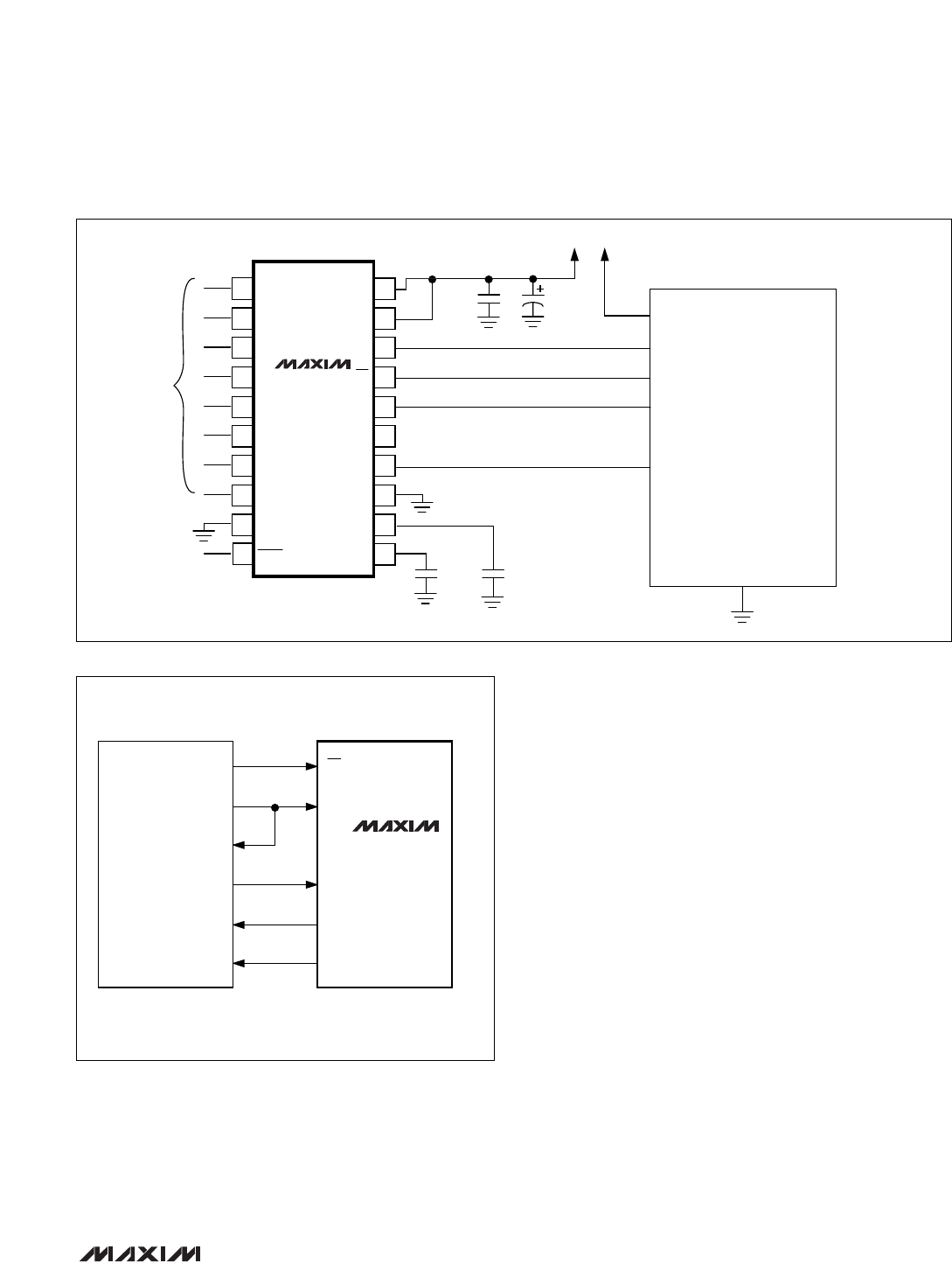Datasheet

MAX1280/MAX1281
400ksps/300ksps, Single-Supply, Low-Power, 8-Channel,
Serial 12-Bit ADCs with Internal Reference
______________________________________________________________________________________ 21
Aperture Delay
Aperture delay (t
AD
) is the time defined between the
falling edge of the sampling clock and the instant when
an actual sample is taken.
Signal-to-Noise Ratio
For a waveform perfectly reconstructed from digital
samples, Signal-to-noise ratio (SNR) is the ratio of full-
scale analog input (RMS value) to the RMS quantization
error (residual error). The ideal theoretical minimum
analog-to-digital noise is caused by quantization error
only and results directly from the ADC’s resolution (N
bits):
SNR = (6.02
✕
N + 1.76)dB
In reality, there are other noise sources besides quanti-
zation noise, including thermal noise, reference noise,
clock jitter, etc. Therefore, SNR is calculated by taking
the ratio of the RMS signal to the RMS noise, which
includes all spectral components minus the fundamen-
tal, the first five harmonics, and the DC offset.
Signal-to-Noise Plus Distortion
Signal-to-noise ratio plus distortion (SINAD) is the ratio
of the fundamental input frequency’s RMS amplitude to
RMS equivalent of all other ADC output signals.
SINAD (dB) = 20
✕
log (Signal
RMS
/ Noise
RMS
)
20
19
18
17
16
15
14
13
12
11
1
2
3
4
5
6
7
8
9
10
MAX1280
MAX1281
MC683XX
CH0
CH1
CH2
CH3
CH4
CH5
CH6
CH7
COM
SHDN
V
DD2
V
DD1
SCLK
CS
DIN
SSTRB
DOUT
GND
REFADJ
REF
V
DD1
(POWER SUPPLIES)
SCK
PCS0
MOSI
MISO
0.1µF
10µF
(GND)
4.7µF
0.01µF
ANALOG
INPUTS
+3V OR +5V
+3V OR +5V
Figure 17. QSPI Connections
XF
CLKX
CLKR
DX
DR
FSR
CS
SCLK
DIN
DOUT
SSTRB
TMS320LC3x
MAX1280
MAX1281
Figure 18. MAX1280/MAX1281-to-TMS320 Serial Interface










